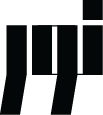Creating an Arabic Type Design Platform
An online platform that facilitates the creation of a community of emerging designers and type professionals to share and promote their Arabic typographic projects. The platform aims to aid the advancement of Arabic online communication.
Concept
For my Masters Thesis project at Parsons School of Design in 2015, I created Tarkeeb, an online platform that facilitates the creation of a community of emerging designers and type professionals to share and promote their Arabic typographic projects – including font design, lettering, and other typographic explorations. This provides Arabic type foundries a place to explore and access talent. With English and the Latin script dominating the internet experience, online representation for native Arabic speakers has been scarce, partially because of a limited variety of Arabic web fonts, online Arabic typographic works, and resources pertaining to Arabic typography. By providing an online collection of Arabic typographic works and an opportunity for designers to be discovered, the platform aims to aid the advancement of Arabic online communication.
Branding
I wanted to design a logo that reflects Arabic calligraphy that transitioned to the digital age as the typography we see today. It is more geometric and mathematical. So I chose the letter “ض” because i find it to be one of the most interesting and structured letters. I chose the name “تركيب” (Tarkeeb) which in Arabic means the act of putting elements together.
Domain Diagram
The platform was designed to connect emerging type designers who want to share their work to type foundries who want to discover new typographic projects. So, I created a domain diagram to maps out the relationships between the users, features and processes, and how they’re all dependent on each other. It helped me reaffirm the centrality of the user groups to the platform, which made user interviews and testing an essential part of the development of my thesis.
User Interviews
I had to test the hypothesis that this platform would create a value add for the stakeholders, I needed to conduct interviews with the two user groups first.
Type Foundries
I interviewed two Arabic Type foundries to see their perspective on a platform like this. I was able to gain a lot of useful insights. One of the main issues was that there doesn’t seem to be a unified online database for resources about Arabic typography, calligraphy, and free fonts people can download. Creating that space would be a small step towards innovating that field.
Type Designers
The second user group I interviewed were 7 professional and emerging Arab type designers, as well as design students interested in the field. I received feedback that further validated the importance of a platform of this nature. Many said that there is definitely a need for an online place for resources around Arabic typography that designers can easily access. There also seemed to be a strong need for a social networking-like experience within Arab type designers and especially those just entering into the field.
Designer Profiles
The most prevalent section of the platform was the Designer Profiles. I designed and built the final website prototype with the ability for designers to create an account and upload their font, as well as their bio and contact information. I started going to Lebanese Universities and promoting the platform to graphic design students studying Arabic typography. 63 joined and, many of them used the platform as their primary portfolio.
Final Result
I showcased the online platform at my final year exhibition with a vinyl decal logo mounted on the wall, and bilingual Arabic and English postcards with the project description along with other printed material. the project was featured in WIRED Magazine and The Arab Weekly.








